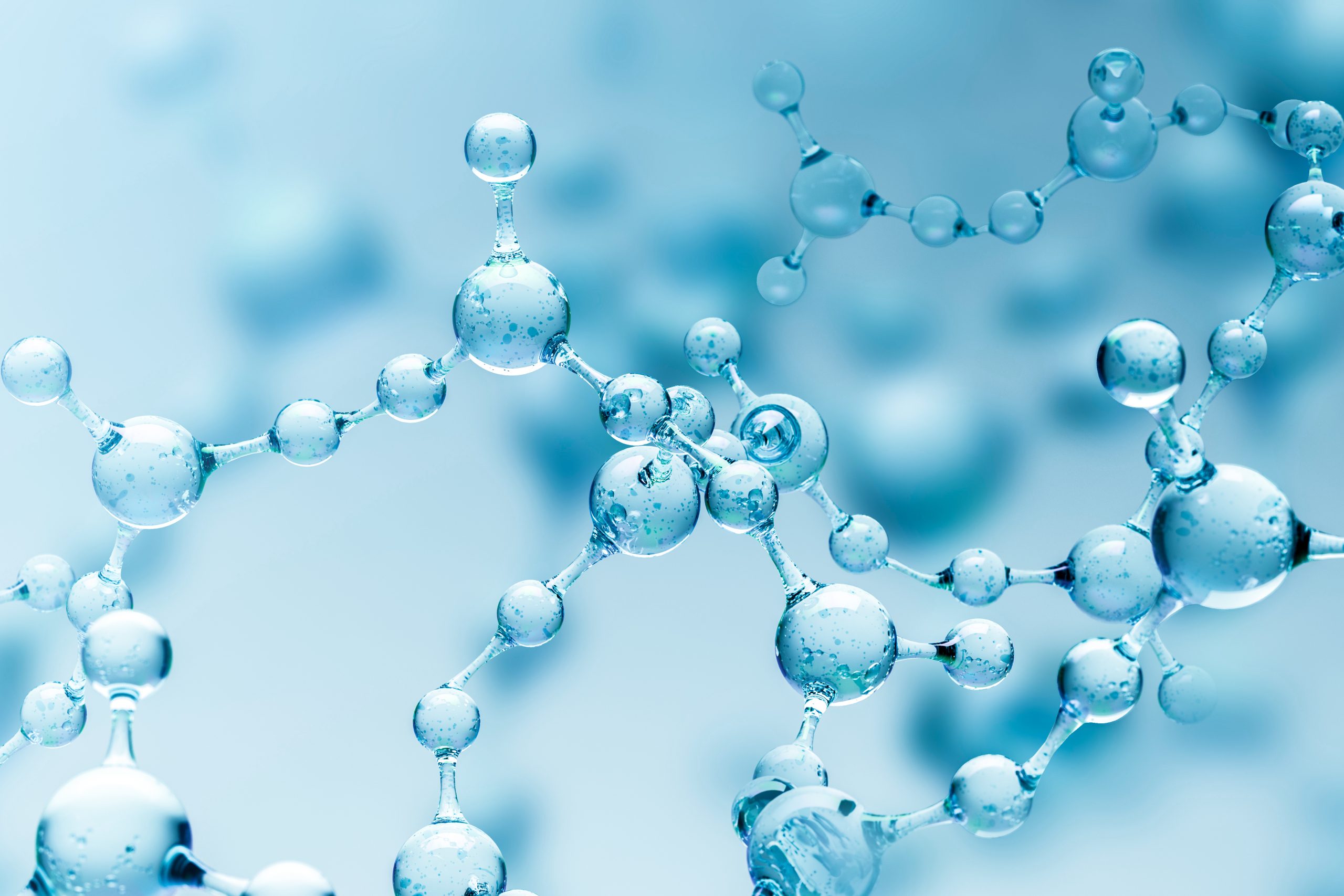
- On this page:
The Synthesis of Organic Compounds for Environmental and Biological Applications
Improving Safety
Using both computational and synthetic techniques, the Starnes research group focuses on the detection of molecules, based on their negative charge (anions) or their three-dimensional shape (chirality). A receptor molecule can be optimized, to bind specifically to a target, in order to indicate detection. The ability to identify the presence of target molecules, whether toxic forever chemicals or a desired shape of a medicinal drug, can lead to increased safety or improvement in efficacy.
*There are 3 main projects in the Starnes research group.
Project 1:The Development of Synthetic Hosts for Environmental Contaminants and Anions of Biological Significance
One aspect of the Starnes research group is centered on the development of synthetic receptors for anions of environmental and biological significance.1 Environmentally, many anions (such as perchlorate, nitrate, nitrite, sulfate and pertechnetate) present themselves as toxic and problematic contaminants in lakes, rivers, aquifers, nuclear waste repositories etc. Recently, a new class of environmental contaminants known as perfluoroalkyl and polyfluoroalkyl substances (PFAS) have emerged which have been shown to be persistent organic pollutants – they persist in the environment and bioaccumulate and may be associated with health problems. We aim to develop sensors and extraction agents for these compounds.
There are also many anions of biological importance such as metabolites, DNA, RNA, proteins and peptides. The development of receptors for these analytes has diagnostic applications in the drug delivery and monitoring of cellular processes.
The research utilizes computational software to design the artificial receptor on a computer, analyze its conformational preferences computationally and then evaluate the receptors molecular recognition properties computationally. Receptors showing promise computationally are then synthesized in lab and studied for their recognition properties.

Project 2:The Development of Synthetic Hosts for Chiral Recognition Applications
The research group is working to modify hosts previously prepared in the research group that have been shown to function as stereoselective hosts for chiral guests2,3 in order to 1. improve on the selectivity of these types of hosts in their guest binding properties and 2. to learn more about the conformations of the hosts and host-guest complexes which will allow the group to improve on host design. One practical result from the work is that it will lead to a better understanding of biological chemistry. Chiral compounds are important, especially in biological chemistry. For example, one enantiomer of a chiral drug is useful whereas its enantiomer might be toxic or deadly. Many biological substrates and structures are chiral as well (such as proteins and what they act on or the product of an enzyme catalyzed reaction). By understanding chiral recognition better, we can better understand biological chemistry and biological recognition in general. Understanding the structures of the hosts and their complexes will contribute to a better understanding of the requirements for selective chiral recognition. The research could also impact the design of sensors for chiral species, the development of catalysts for chiral synthesis and the separations industry (for the separation of chiral substances such as enantiomeric molecules, which would greatly impact the pharmaceutical industry since one enantiomeric of a chiral drug might be toxic and therefore must be isolated and removed from the drug mixture).
Project 3. The Synthesis and Study of Perylene Diimide Compounds for Applications in Solar Voltaic Cells
This research is focused on the synthesis and study of perylene diimide (PDI) compounds to improve their solubility properties and aggregation behavior. The research also focuses on optimizing their properties for use as electron acceptors in organic solar cells to maximize photovoltaic efficiency. The student will synthesize PDI compounds and will characterize their aggregation behavior using a scanning electron microscope.

S
A student working on any of these three projects will be trained in synthetic organic chemistry, including the synthesis, isolation, purification and identification of organic compounds. The student will use techniques such as computational chemistry, NMR, IR, circular dichroism, fluorescence and mass spectrometry to study the systems.
- MariJo Wienkers, Josmalen Ramos, Hikma Jemal, Chaz Cardenas, Paul Wiget, Alfreda Nelson, Shiloh Free, Jun Wu, Rebecca Roach, Marius Vulcan, Kristopher Waynant, Kyle Fort, Anna Vladimirova, Jeffery Sun, Samuel Eli Hunt, Dmitry M. Rudkevich, Stephen D. Starnes “Enhanced Shape-Selective Recognition of Anion Guests through Complexation- Induced Organization of Porphyrin Hosts,” Org. Letters, 2012, 14, 6, 1370-1373.
- Wu, Xiaowen; Starnes, Stephen D. “L-Nipecotic Acid-Porphyrin Derivative: A Chiral Host with Introverted Functionality for Chiral Recognition,” Org. Letters, 2012, 14, 14, 3652-3655.
- Nandipati, V.; Akinapelli, K.; Koya, L.; Starnes, S.D. “Recognition of Mandelate Stereoisomers by Chiral Porphyrin Hosts: Prediction of Stereopreference in Guest Binding a Priori Using a Simple Binding Model?,” Tetrahedron Letters, 2014, 55, 985-991.


